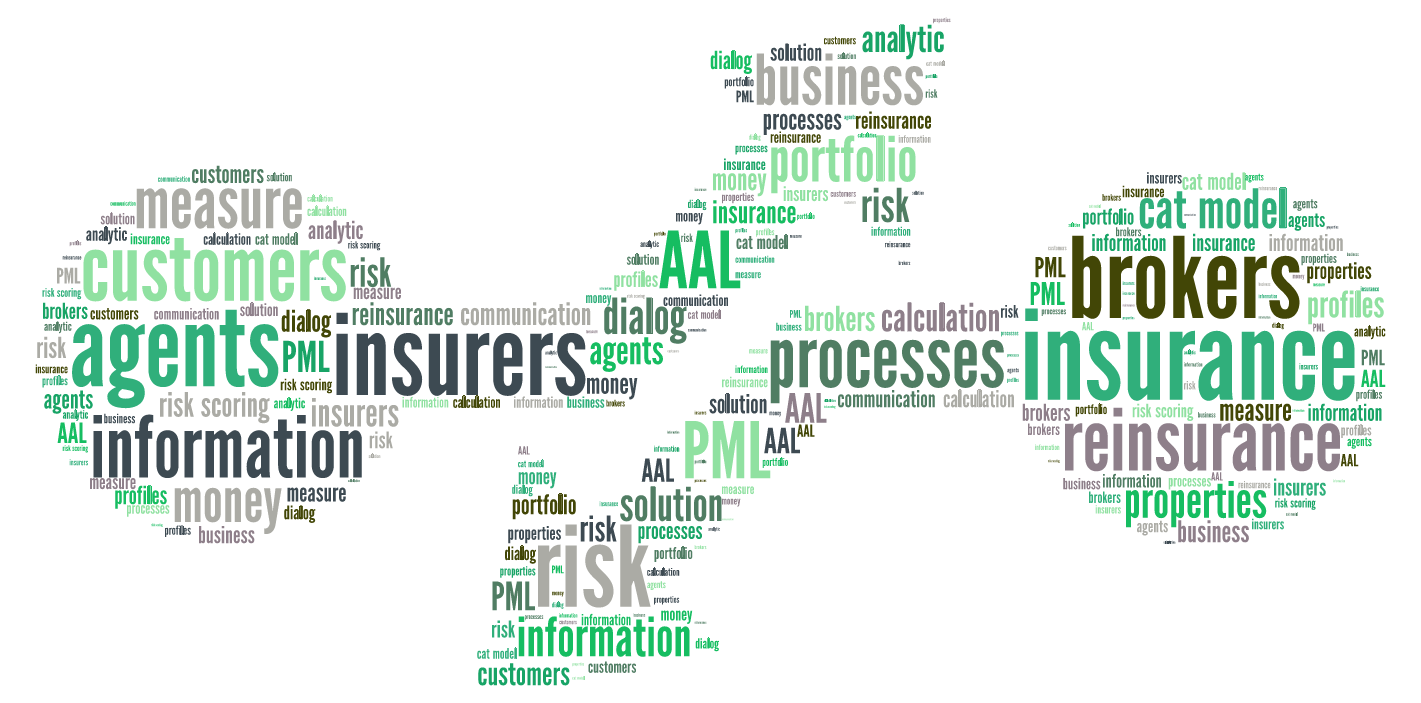There is a great article over at Insurance Thought Leadership by Deb Smallwood describing the traditional interaction between agents and insurers. Or, to be precise, the lack of interaction between them (It’s not a good sign when the metaphor for the link is a trench!). The issue she explores is the difficulty in exchanging the necessary information between agents (or brokers) and insurers to ensure smooth business processes. The same problem could be expanded to include any interface in the entire insurance industry, including reinsurance brokers working with their customers and the reinsurers, and even the reinsurers working with the markets.
There is a lot of information these different groups need to share, but I’m going to focus on one, and it’s an important one: risk. It is a real challenge to convey the risk of both individual properties and portfolios because there are so many factors that influence risk and a variety of ways to measure risk. This is an important problem to solve because risk is at the core of what brokers/agents are trying to convey to insurers, and insurers to re-brokers, and onwards.
The closest thing to a common language is cat model output; e.g., PML, AAL, etc. This works well enough because it translates risk (complex) into money (easy), and allows calculations to be undertaken. But it’s not satisfactory because it obscures the actual risk, and it’s important for both parties in such a dialog to understand what the risk is that they are talking about. For example, with PMLs—but with nothing else—a shopping mall can be equivalent to a one bedroom bungalow (maybe that’s an extreme example, but it makes the point).
One solution to this communication problem is risk scoring. If an insurance ecosystem (i.e. agents, insurers, reinsurers, brokers) can come together and jointly define a risk scoring analytic, they can create a lingua franca for risk. With such a common language around risk, it becomes very easy to discuss risk and risk transfer. The score could be complex (alpha-numeric, like B16) to ensure as much nuance as possible, or it can be super simple (red light / green light) to convey whether a risk fits a particular profile or not. Scores can be built with whatever information is relevant to all parties involved.
Risk scoring can’t replace the trenches that Ms. Smallwood describes with smooth conduits. However, it can maybe lay some concrete on the bottom of the trenches so that you can ride a bike through them.

.png?width=500&name=InsitePro4%20(1).png)




Comment Form